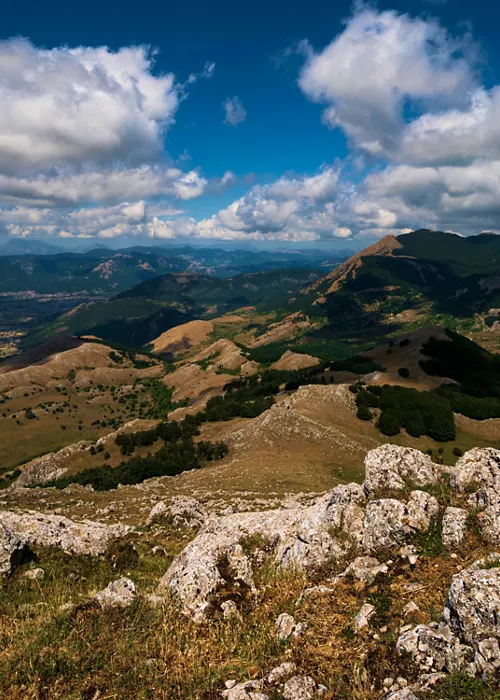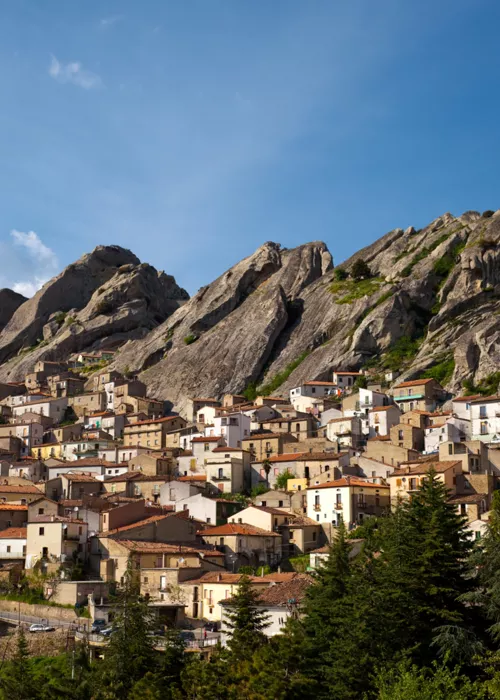From Policoro towards the Literary parks among the ravines

Sailing along the Griko Route, you will be welcomed by the tourist port of Marina di Policoro, a modern marina with all comforts, 322 berths for boats up to 40 metres in length, and a design that guarantees minimum wave action in the mooring basin. The marina is located in the Marinagri Residential Tourist Complex, a town built on the sea, which offers its residents the possibility of mooring their boats close to their homes. Leaving the tourist port, we enter the urban centre of Policoro, built on the remains of ancient Heraclea, one of the most important cities of Magna Graecia. The archaeological ruins, museums and historical sites bear witness to a glorious past and offer a fascinating journey through time. The first obligatory stop to learn about the ancient splendours of Magna Graecia is the National Archaeological Museum of Siritide, which houses some important finds from the 7th and 6th centuries BC. Votive statuettes, funerary objects, locally produced figurative ceramics are among the oldest made in Magna Graecia. In the museum you can admire the most important finds from the Greek cities of Siris and Herakleia and from the indigenous centres of the hinterland. Among the most famous objects is the tomb of the Painter of Policoro from the 5th century B.C., which contains very precious figurative vases depicting episodes from Greek mythology, bronze armour, gold and silver jewellery, indigenous vases from Enotrian and Lucanian centres, as well as amber necklaces and jewellery from the Baltic Sea. At the end of the visit, the compass orients us towards the Literary Parks of Isabella Morra di Valsinni and of Carlo Levi in Aliano, to immerse ourselves in the interior of Lucania, crossing the lunar landscape of the Calanchi.
Valsinni: towards the Literary Park of Isabella Morra

From the Siritide Museum, crossing the SS 653, our fascinating journey begins towards Valsinni, a romantic medieval village, considered the capital of the first Literary Park of Southern Italy, dedicated to the poetess Isabella Morra, murdered by her brothers for her poetic and amorous correspondence with Diego Sandoval, Spanish baron of nearby Bollita, now Nova Siri. Among the rocky outcrops on the slopes of Monte Coppolo, inside the Pollino National Park, stands the baronial castle of Valsinni, with its network of alleys, the scene of one of the most romantic and moving episodes in Basilicata. Among the best-preserved residences in Basilicata, we will visit the Morra Castle, with Aragonese features, which already existed in Lombard times. The towns of Morra have inspired sentimental journeys and, thanks to storytellers and minstrels, during the summer it is possible to attend performances and shows that recall the verses and emotions of Isabella. The narrow streets around the castle are evocative, where you can stroll among the old houses that cling to the rocky outcrop. Among the other attractions of the town is the Mother Church of Santa Maria Assunta, where you can admire ancient frescoes, an old organ and a sixteenth-century crucifix, together with a Neapolitan-style nativity scene.
Aliano: towards Carlo Levi's Literary Park

Drive along the SS 598 of the Fondo Valle dell'Agri for 52 km towards Aliano, an ancient village perched on rugged clay hills and overlooking a breathtaking lunar panorama. Immortalised by the writer Carlo Levi, who set his "Christ stopped at Eboli" here, his spirit still echoes in the village. Not to be missed is the Literary Park dedicated to the Turin doctor and poet who went into exile in Lucania during the Fascist period, where it is possible to learn more about materials, documents, works produced during his exile. With the help of specialised guides, it is possible to visit Carlo Levi's house where the poet's sacred rooms have been left intact and bare, and his tomb, completely renovated in its appearance, where many go to pay homage to him as if he were a protecting god.
In the Pinacoteca it is also possible to admire original paintings, lithographs and historical documents, and permanent exhibitions on the life of Carlo Levi, the tutelary deity of the place. Among other places of interest to visit, there is also the 16th century Luigi Gonzaga Church, the Museum of Peasant Civilization , which houses agricultural and rural tools of the time, including an old oil mill and other testimonies of peasant culture. In summer, if you are in the area during the third week of August, it is very suggestive and engaging to take part in the “Festival della Paesologia - La Luna e i Calanchi” (Paesology Festival - The Moon and the Calanchi), which enlivens the historical centre of Aliano from afternoon until dawn with cultural activities, shows and walks among the evocative clay hills, together with photographers, writers, artists, film-makers and musicians. To fully enjoy the spirit of the place, it is advisable to stay overnight in the area and continue the next day, crossing the lunar landscape of the Calanchi and landing in the ghost town of Craco.
Towards Craco, crossing the lunar landscape of the Calanchi

In the morning of the second day, we start our fascinating journey from Aliano to the ghost town of Craco, heading north-west along the SS 598 of Fondo della Valle d'Agri. After about 40 kilometres we enter a place of fascinating desolation. The village, abandoned since the 70s, is perched on a hill of soft, whitish rock and offers a unique and evocative sight. Along the way, you can stop to walk among the clay sculptures that dot the lunar terrain of the Calanchi and admire the extraordinary shapes of spires and pinnacles, like in an open-air geological museum. Back on board, suspended in time, Craco awaits you with its monuments of ancient beauty, including the Mother Church, the Norman Tower, the Maronna, the Grossi, Carbone and Simonetti palaces. Inside the convent of San Pietro dei Frati Minori you can visit the MEC - Emotional Museum of Craco, the gateway to the ghost town, which welcomes you with its multimedia installations in a story of suggestion and emotion. Chosen by great national and international filmmakers, Craco is the natural set of important films, including: “La Lupa” by Alberto Lattuada “Christ Stopped at Eboli” by Francesco Rosi, “King David” by Bruce Beresford “Sun Also at Night” by the Taviani brothers, “Scorched Earth” by Fabio Segatori, “Nativity” by Catherine Hardwicke, “The Passion of the Christ” by Mel Gibson, “Agent 007 Quantum of Solace”, by Marc Forster, “Basilicata coast to coast” by Rocco Papaleo, “Ninfa Plebea” by Lina Wertmüller. To fully appreciate the history and magic of this enchanted village, we recommend visiting Craco with the help of an expert guide, who will be able to lead you through the secrets and stories that have shaped this extraordinary place.
Towards Metaponto, discovering the remains of ancient Magna Graecia

From the evocative Craco, the journey continues towards the legendary Costa degli Dei (Coast of the Gods), heading towards Metaponto, an ancient Greek colony founded in the 7th century BC. Situated between the mouths of the Basento and Bradano rivers, Metaponto is a veritable treasure trove of history and culture, where the glorious past of Magna Graecia lives on in all its splendour. Here you can visit the Archaeological Park of the urban area of Metaponto, the Archaeological Museum of Metaponto, the archaeological area of the Heraion of the Palatine Tables and, for nature lovers, also the Metaponto Nature Reserve. Among the most important cities, Metaponto was the capital of Magna Graecia, in fact there are testimonies and traces of divinities, heroes, warriors, philosophers, such as the mathematician Pythagoras who founded his school here and died in 495 BC. In the Archaeological Park you can walk among the remains of a road network, the sanctuary, the agora with the theatre, the pottery district and the castrum. Not far from the Archaeological Park, after a short drive, in the direction of Taranto, it is possible to reach the temple of the Palatine Tables, once dedicated to the goddess Athena and then to the goddess Hera. Also called the School of Pythagoras in memory of the great philosopher and mathematician, it is composed of 15 columns with 20 flutes and Doric capitals. Nature lovers will find a peaceful retreat in the 240-hectare Metaponto Nature Reserve. Here, among stone pines, Aleppo pines, cypresses and eucalyptus, you can appreciate the unmistakable scents and unspoilt beauty of this green oasis, ideal for a regenerating walk in an environment rich in biodiversity. On the way back to Policoro, treat yourself to a delicious culinary break. Stop at a local bakery to taste the famous falagoni, calzones filled with chard, potatoes, eggs, peppers or onion. This typical street food is a true explosion of flavours, perfect for a quick and tasty snack at any time of day.












